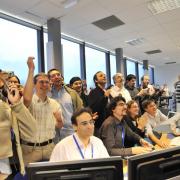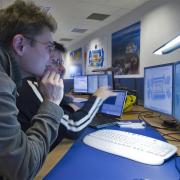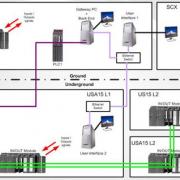Access to Collaboration Site and Physics Results

Whether searching for signs of new physics, or making precise measurements of known interactions, it is essential to know the total number of proton-proton collisions that the LHC delivers in ATLAS. This parameter, known as “luminosity”, is a vital part of ATLAS analyses.
Having a precise measurement of the luminosity allows ATLAS physicists to calculate the rate at which the processes they’re interested in are expected: “Typical examples are the production of W and Z bosons,” explains Witold Kozanecki, one of the ATLAS Luminosity Group Conveners. “Having a very precise measurement of the rate of these processes is a very important test of the Standard Model.”
To measure the luminosity, the ATLAS experiment looks at the number of interactions detected each time the proton beams cross. This is measured by dedicated detectors – the Beam Condition Monitor (BCM) and Luminosity Cherenkov Integrating Detector (LUCID) – on either side of the interaction point.
Luminosity also depends on the overlap of the beams at the collision point, a process that can only be measured by “van der Meer (vdM) scans”. Thus, every year, the LHC has a series of special runs to perform vdM scans, named after the accelerator physicist Simon van der Meer who developed the technique at CERN in the 1970s. During these scans, the beams are separated, first vertically and then horizontally, so that the amount by which they overlap varies. When the beams only overlap by a small amount there are few interactions. As the overlap increases, so does the number of interactions (as illustrated in image above). By knowing the separation of the two beams, ATLAS can calibrate the measurements taken by LUCID and the BCM.
Having a precise measurement of the luminosity allows ATLAS physicists to calculate the rate at which the processes they’re interested in are expected.
ATLAS physicists also combine several indirect measurements of the number of interactions to estimate the luminosity, e.g. by counting the number of charged particle tracks. A dedicated team is needed to do this work and there are many cross-checks between all of the different methods. “One of the main roles of the luminosity group is to understand how the different detectors and algorithms are behaving with respect to each other and with respect to time,” says Manuela Venturi, the ATLAS Luminosity Operations Manager. “It is our role to bring all of this information together and try to make sense out of it.” By using a combination of different detectors and different methods, ATLAS is able to measure the luminosity with unprecedented accuracy.
ATLAS has recently submitted a paper about the techniques developed for estimating the luminosity in 2012. These methods have since been further refined and the luminosity team recently released the final estimate of the luminosity of all of the data taken in 2015, measuring this to a precision of 2.1%. The 2016 vdM scan took place at the end of May. Since then the team has been working hard to analyse and combine all of the information collected to provide preliminary results. The final estimate for 2016 will be calculated once the experiment finishes data-taking at the end of this year.







